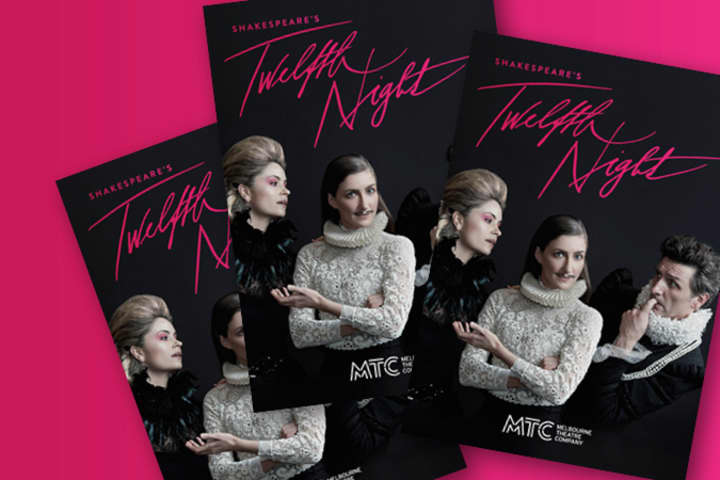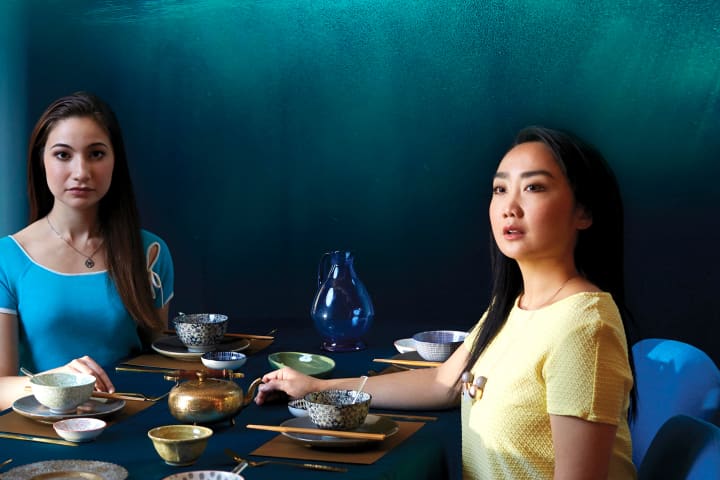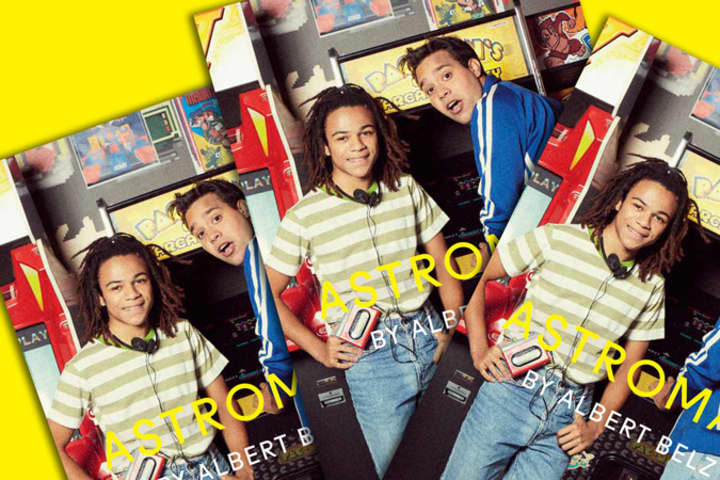Were you a fan of Mark Haddon’s book before you started working on The Curious Incident of the Dog in the Night-Time?
Yes I was a real fan of the book. I read it when it first came out and absolutely loved it. I never thought in a million years that it would be adapted for the stage. In fact I thought it was a book you couldn’t really adapt.
How did you feel when you got the script from Simon Stephens?
Simon asked me to read a script that he’d spent some time on as a favour. I realised it was an adaptation of The Curious Incident of the Dog in the Night-Time. I had absolutely no expectation and thought it’s really impossible to adapt. I had no idea that he was asking me to direct it, although he’s just told me recently that it was his secret plan. It was quite good actually because I read it with an open mind. I wasn’t worried about how I was going to stage it or thinking ‘is this ever going to work?’ You often read scripts you think you’re going to direct and think what on earth is going to happen? I saw it as a film at first. I read it a couple of times and I knew I loved it. I thought it was very visceral and incredibly emotional. I had no idea how you’d do it, absolutely none. At that time there wasn’t much help in the stage directions for things like Christopher’s journey to London. I just thought it’s an amazing story and he’s found a way to make it work, with lots of voices rather than just Christopher.
So how did you choose the creative team for the show?
In a very early draft Simon wrote something like ‘maybe at one point Christopher goes bonkers and dances all over the place – maybe we can involve Frantic [Assembly]’. I knew physical theatre company Frantic Assembly’s work and I really liked them, and I had always wanted to work with them. So I jumped at the chance to work with them early on in the process. I knew that there were a lot of parts of the play that needed to be staged imaginatively with the actors on the stage as opposed to great bits of scenery. I knew their help would be incredibly useful. I’d worked with the stage designer Bunny Christie before and I’d worked with lighting designer Paule Constable before, as well as composer Adrian Sutton (the latter two on War Horse). I hadn’t worked with video designer Finn Ross before – he was recommended.
How did you come up with the idea that the whole stage was Christopher’s mind?
That was a long, long process. For a long time, we were going along the route of it being a play within a play and if it was that, who are the performers? Are they his teachers? Are they his school friends? If they’re his teachers – where are they doing the play? Then we thought it could be in a school hall. So the play was going to be set in a school hall for a really long time. Eventually through lots of conversations, lots of meetings and lots of playing with the model box Bunny said she thought it should be more magical than that. I was really keen that it shouldn’t be too high tech; that it wasn’t some great big illusion; that it had to look like it was all created by people on stage – humans making the story. But between us we eventually came to a happy place that it should be his brain and that it should be a box, and that in the box there are lots of magic tricks. But the magic tricks aren’t down to incredible moving digital scenery, it’s to do with seeing how the humans create the magic.
Can you describe the journey from workshops, to the National Theatre’s Cottlesloe Theatre, to the West End, to Broadway, to the subsequent tours.
Simon had always thought that if he were to adapt he should adapt it so that the poorest drama group could do it in an afternoon. He never wanted it to just be the property of the National Theatre, so that if you had money you could afford to do it. He purposefully doubled up the characters, he purposefully never wrote anything to do with stage trickery. He just writes what they say to each other and the story is carried through that.
When we were in the workshop we were then exploring how we to do the journey to London, how would we do things like Christopher’s routine going into his house every day and make it like a physical journey that the audience would recognise, without having to use the keys and the doormat and the door and the coat hook and all of that.
Once we discovered we could do that very simply without any props and then we worked out that we could do the journey to London in the workshop. We came up with some terrible ideas but only the good ones stuck. When we realised we could do a very populated Paddington station with only eight actors we knew we had a show, and it helped Bunny and I work intensely on the model of the set. We story boarded every single scene. We had the model and the little figurines for every scene and worked out what each scene looked like. When Frantic Assembly came in they filled out all the dots and made it beautiful, basically.
Originally it was in the round because I instinctively felt that the audience were part of him and the best way to experience theatre in that way and to be part of the action is to be in the round. If you’re surrounding it – the central fugal force makes your focus very central – you’re aware that you’re part of the community experience – you’re together and that the actors come through the audience.
I didn’t want there to be any logic to a particular part of the stage being the school and another part of the stage being the home. I wanted to keep changing the logic because Christopher does. Christopher decides he wants to tell you a story about four red cars in a row regardless of where he is in the narrative – he doesn’t care about chronology either in the adaptation. I wanted it to be all over the place, I didn’t want you to rely on anything particularly physical or tangible, just on the actors.
When we went in to the West End we couldn’t find a space which could hold us in the round. Bunny and I thought long and hard about whether we could do it. We thought actually if this space is his brain and it’s a box and there are lots of boxes on stage, why don’t we make it a proper box – with walls and sides – and then we can flip the logic of what is the floor and what is the ceiling.
Sometimes, when he is feeling disorientated, he walks along the walls. When we found that it worked really well in a proscenium arch and the projections looked even better, we then had the confidence to take it to Broadway and on tour.
Do you think the role of Christopher is a challenging one to play for the actor?
It’s a really, really difficult role and difficult to cast actually because he has to be young but, inevitably, young usually means inexperienced and the actor has to be on stage the whole time. He has to drive every scene and he’s always the focal point. There are a lot of words to say and on top of that he has to understand what it is to be this kid. He has to understand what it is to feel emotions and to feel them very intensely but not be able to identify or channel or articulate them. He’s got to be highly traumatised on the journey to London and he’s got to be quite obstreperous as a character but yet you’ve got to like him. He’s got to be really very adept physically. High demands on all levels and therefore a very difficult part to play.
That’s why there are two Christophers – it’s too physically demanding to do 8 shows a week because it is such an incredibly demanding role.
Touring is more demanding than being in one venue. You’re away from your comforts, you’re travelling every week from one place to another, and you’re getting to know a whole new stage and a whole new audience, a whole new stage – so even more demanding!
Can you tell us about your background with Simon Stephens?
We were both brought up in Stockport. We knew that we went to schools on the opposite sides of the road. He went to Stockport School and I went to Stockport Grammar School and we were a few years apart. He’s about four years younger than me. We knew that we had lived quite near to each other in Stockport but recently when we were doing interviews for Simons’s play Port (we’ve done lots of shows together) we were being interviewed by a journalist and he asked me how I used to get to school. We knew our schools were quite a way away from where we lived and I said ‘Oh I used to get the 197’ and he said ‘where did you get it from’ and I said ‘the bus stop at the end of the golf course’ and he said ‘so did I’ then he said ‘oh my god, I remember you’. So, we literally lived three streets away from each other.
It doesn’t feel weird at all that we’re working together so closely now because a lot of it feels so right and we have familiarity. Often Northerners in London migrate towards each other – certainly there’s an understanding. Our upbringings were very different but we did go to similar primary schools, in fact I nearly went to his primary school. Now we have a kind of shorthand.
Did you have any inspiring teachers?
I was really lucky. I had lots of teachers who influenced me. I remember one teacher – Mrs Shankland. I must’ve been about six and I’ll never forget her. She was really inspirational and very encouraging – I felt for the first time someone thought ‘Oh Marianne you can do it’. Then I went to a great school in Audley Edge, then I went to Stockport Grammar and I had a great art teacher whose philosophy was ‘everybody can do art, you don’t have to be born with a talent’ which is a really inspiring thing. There was also a fantastic English teacher who really believed in me. I suppose the thing about teachers is that I remember the ones who encouraged me and thought they saw something in me that had potential. The teachers who don’t see that, you forget. You think that they forget you. That’s what happens with Siobhan in the play. Siobhan’s sees sides of Christopher that nobody else does, and that’s what makes him blossom. He then starts to depend and rely on her, perhaps a little too much.
The Curious Incident of the Dog in the Night-Time has received many awards and plaudits, and has played to over two million people world-wide. What do you think it is about the play that resonates with audiences?
Lots of people relate to having a really inspirational teacher who, amongst the midst of disappointment that every other adult gives you, can see potential in a child. Also, it’s about parenting and about families – parents who are flawed but desperately trying to do their best. They’re really trying to put Christopher first in everything, they just get it wrong. It’s also about Christopher – he’s highly vulnerable and highly limited in some ways yet manages to triumph and succeed in a way that’s beyond even his dreams.
Mark Haddon has always said it’s about difference. Is that how the play portrays Christopher?
The thing about the play and the book is that we try to get the audience to see things through Christopher’s eyes most of the time. They don’t see him as ‘other’. They see him as themselves. But the play also deals with dramatic irony as well and you’re ahead of the game. You’re worried about him jumping into the train tracks and trying to save his rat, for example. You’re aware, just before he is, that something is slightly off in the story about his mum. But most of the time, we hope you experience things in the way Christopher does. You get the impression of what its like to be in a busy Paddington station or on the tube.
Are there any parallels between War Horse, which you co-directed, and Curious Incident?
There’s a parallel in that they are both stories about triumphing in the face of adversity. Both have a young boy in the central role. Both are about the rites of passage and growing up. The staging of both shows doesn’t rely on theatrical trickery or illusion, with the actors creating the story in front of an audience.
Published on 28 August 2017





